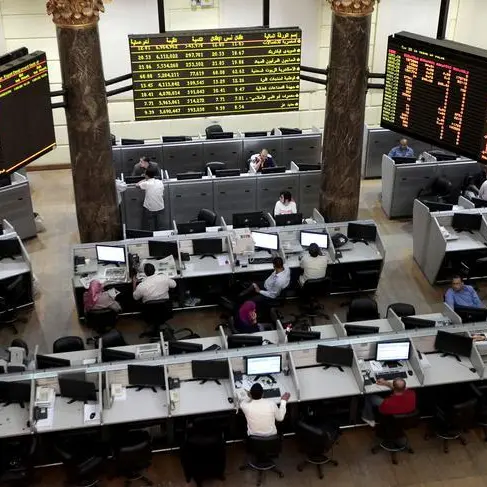PHOTO
By Abhinav Ramnarayan
LONDON, July 18 (IFR) - Low and negative bond yields are forcing Europe's real money investor community into a major rethink on how to meet their targets without taking excessive risks.
High-grade bonds have long been a staple product for real money investors, a term used to describe asset managers, pension funds and insurers that all have fixed targets on returns.
With returns collapsing in core Europe - globally, around US$10trn of sovereign bonds now trade with a negative yield - these investors are having to either look further afield or take bigger risks.
Raimund Heischmann, a portfolio manager at German asset manager MEAG, summed up the situation. "Institutional investors are in the vices of low interest rates and have to choose between unsavoury alternatives," he told IFR.
Corporate bond yields in Europe have also fallen, driven in part by purchases from the European Central Bank. In recent days, Deutsche Bahn issued the first benchmark negative-yielding primary corporate bond in the single currency.
"Pre-crisis, when interest rates were much higher, the average guaranteed saving rate was often in the region of 3%-4%. It is challenging to meet those levels in the current environment," said Gareth Haslip, global head of insurance strategy and analytics at JP Morgan Asset Management.
DEFYING LOGIC
In the search for yield, many investors have either moved up the duration curve of safe-haven assets such as French OATs - or have switched to US Treasuries, where there are still relatively chunky yields on offer.
This has pushed 10-year US Treasuries down to 1.5% from around 2% at the start of the year, despite an improvement in the economy and expectations for rate hikes over the next year. In Europe, one 50-year French OAT is now yielding 1.33%, more than 58bp in from the reoffer of 1.916% when it was priced in April.
Investors spoken to by IFR were cautious on these moves.
"Not to be bearish on duration, but we've seen a big move in a short period of time in these bonds, and a lot of assumptions are being taken when you're buying long-dated bonds at low yields," said David Riley, head of credit strategy at BlueBay Asset Management.
He believes there is a better risk-reward profile in buying US investment grade corporate bonds and emerging market bonds.
Apart from moving to emerging markets, several investors spoken to by IFR suggested a move away from fixed income altogether.
BIGGER SHARE
Haslip believes that insurers could start considering dedicating a part of their portfolio to equities once again.
"Equities haven't been a major part of insurance portfolios, though it was more popular back in 2000. I wouldn't be surprised if there is an re-emergence of this trend. I can see some portfolios holding about 10% of equities," he said.
Both he and others also talked of moving to less liquid sectors such as private equity, real estate, infrastructure finance and hedge funds.
But once again, these sectors are likely only to make up 5% to 10% of real money portfolios.
Bond markets will remain a staple part of investment portfolios because of regulatory requirements. Solvency II, for example - the European regulation that aims to protect insurers from becoming insolvent - requires that these firms hold capital against risky investments.
As a result, as much as the strategies are changing, the sector will be affected if there is a "Japanification" of the European landscape: low growth and low inflation for several years.
"We need policies that mean that growth can pick up, which in turn will mean inflation can pick up and bond yields will pick up," said Guy Miller, chief market strategist and head of macroeconomics at Zurich Insurance. "An extended period of low yields will affect the whole savings industry very badly, including insurance."
(Reporting by Abhinav Ramnarayan, Editing by Gareth Gore and Matthew Davies) ((abhinav.ramnarayan@thomsonreuters.com; 0044 207 542 7253; 0044 777 555 1499;))
LONDON, July 18 (IFR) - Low and negative bond yields are forcing Europe's real money investor community into a major rethink on how to meet their targets without taking excessive risks.
High-grade bonds have long been a staple product for real money investors, a term used to describe asset managers, pension funds and insurers that all have fixed targets on returns.
With returns collapsing in core Europe - globally, around US$10trn of sovereign bonds now trade with a negative yield - these investors are having to either look further afield or take bigger risks.
Raimund Heischmann, a portfolio manager at German asset manager MEAG, summed up the situation. "Institutional investors are in the vices of low interest rates and have to choose between unsavoury alternatives," he told IFR.
Corporate bond yields in Europe have also fallen, driven in part by purchases from the European Central Bank. In recent days, Deutsche Bahn issued the first benchmark negative-yielding primary corporate bond in the single currency.
"Pre-crisis, when interest rates were much higher, the average guaranteed saving rate was often in the region of 3%-4%. It is challenging to meet those levels in the current environment," said Gareth Haslip, global head of insurance strategy and analytics at JP Morgan Asset Management.
DEFYING LOGIC
In the search for yield, many investors have either moved up the duration curve of safe-haven assets such as French OATs - or have switched to US Treasuries, where there are still relatively chunky yields on offer.
This has pushed 10-year US Treasuries down to 1.5% from around 2% at the start of the year, despite an improvement in the economy and expectations for rate hikes over the next year. In Europe, one 50-year French OAT is now yielding 1.33%, more than 58bp in from the reoffer of 1.916% when it was priced in April.
Investors spoken to by IFR were cautious on these moves.
"Not to be bearish on duration, but we've seen a big move in a short period of time in these bonds, and a lot of assumptions are being taken when you're buying long-dated bonds at low yields," said David Riley, head of credit strategy at BlueBay Asset Management.
He believes there is a better risk-reward profile in buying US investment grade corporate bonds and emerging market bonds.
Apart from moving to emerging markets, several investors spoken to by IFR suggested a move away from fixed income altogether.
BIGGER SHARE
Haslip believes that insurers could start considering dedicating a part of their portfolio to equities once again.
"Equities haven't been a major part of insurance portfolios, though it was more popular back in 2000. I wouldn't be surprised if there is an re-emergence of this trend. I can see some portfolios holding about 10% of equities," he said.
Both he and others also talked of moving to less liquid sectors such as private equity, real estate, infrastructure finance and hedge funds.
But once again, these sectors are likely only to make up 5% to 10% of real money portfolios.
Bond markets will remain a staple part of investment portfolios because of regulatory requirements. Solvency II, for example - the European regulation that aims to protect insurers from becoming insolvent - requires that these firms hold capital against risky investments.
As a result, as much as the strategies are changing, the sector will be affected if there is a "Japanification" of the European landscape: low growth and low inflation for several years.
"We need policies that mean that growth can pick up, which in turn will mean inflation can pick up and bond yields will pick up," said Guy Miller, chief market strategist and head of macroeconomics at Zurich Insurance. "An extended period of low yields will affect the whole savings industry very badly, including insurance."
(Reporting by Abhinav Ramnarayan, Editing by Gareth Gore and Matthew Davies) ((abhinav.ramnarayan@thomsonreuters.com; 0044 207 542 7253; 0044 777 555 1499;))












